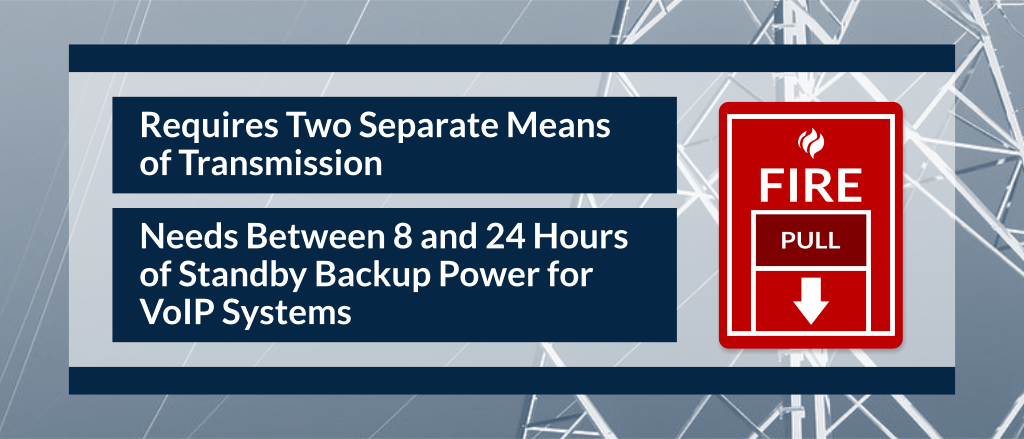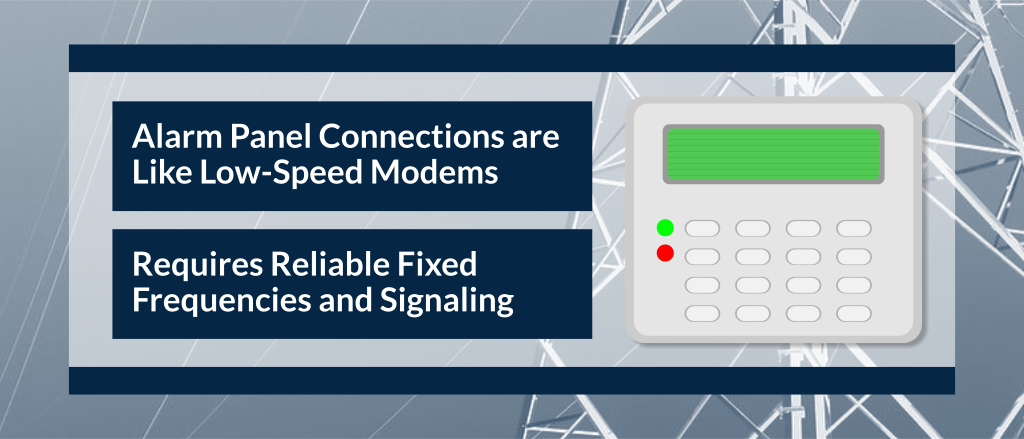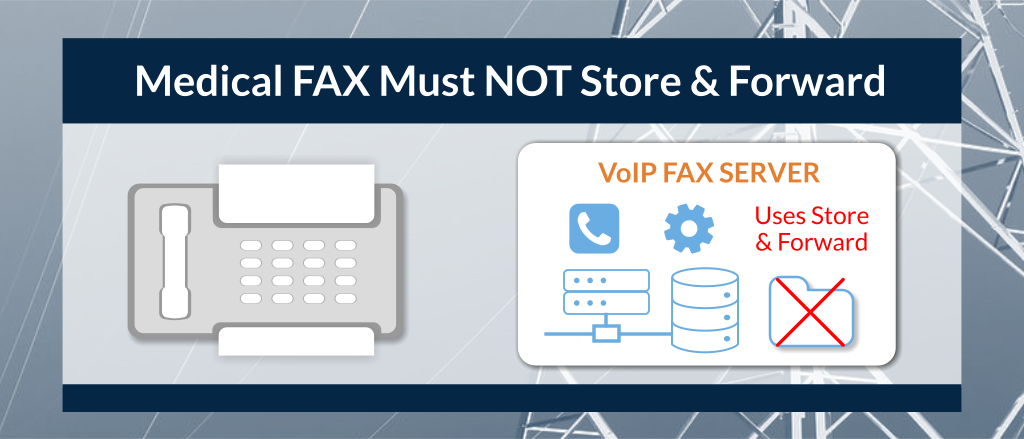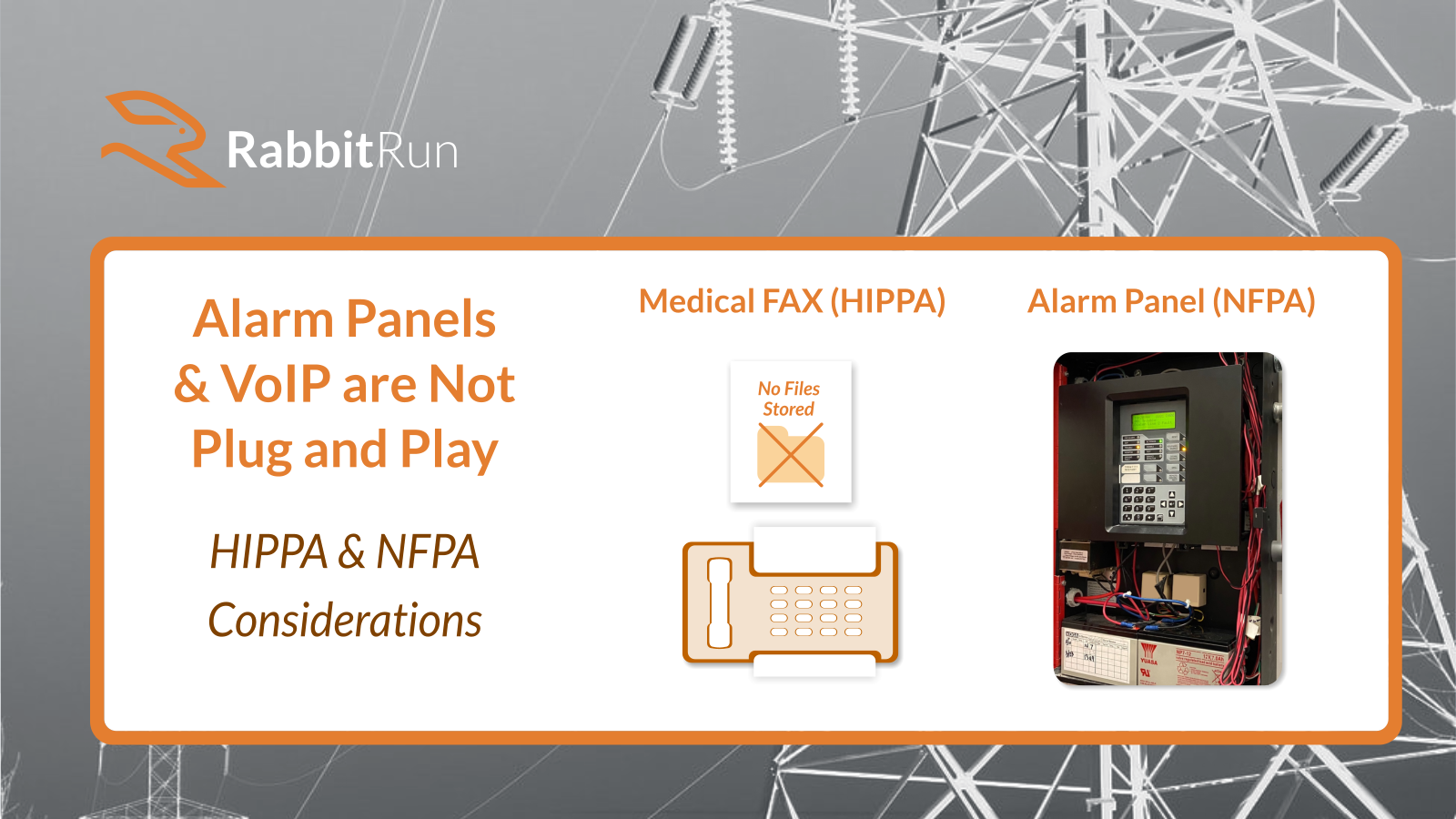Part 2:
Alarms & Medical FAX
Fire Alarms & VoIP Considerations
National Fire Protection Association (NFPA), NFPA 72 2010 Fire Code requires that a fire alarm panel has a primary and backup method of communication to the monitoring station or service.
Historically and in accordance with National Fire Alarm and Signaling Code NFPA 72-138, section 26.6.3.2.1.5 states that dialers should have “two separate means of transmission, ” meaning a primary and backup method of communication, which translates to two POTS lines for each panel.
As of 2010, NFPA 72 now explicitly approves the use of alternative digital voice technologies, like VoIP (Voice Over Internet Protocol) using internet access provider connections like cable and fiber-based internet services as a means of transport to the PSTN (Public Switched Telephone Network) for connection to the monitoring station.
- Both NFPA 27/2007 and 2010 require a secondary power supply to provide between 8 and 24 Hours of standby backup power for VoIP systems used for alarm panel communications to the monitoring station.

Alarm Panels & VoIP are Not Plug and Play
Alarm panel dialers can have difficulty communicating on a VoIP system. Typically, an ATA (Analog Terminal Adapter) is used to convert the POTS signal to VoIP for digital transport over the internet. The ATA optimizes these signals for human voice which can tolerate the bunching and encoding of packets and data compression from VoIP codecs.
- Whereas fire alarm panels are much like low-speed modem connections operating at fixed frequencies and signaling and may not match the VoIP encoding sample rates which can cause problems when the alarm panel tries to communicate with the monitoring station.

Medical FAX & HIPPA
HIPPA is the Health Insurance Portability and Accountability Act of 1996 (HIPAA). These Privacy Rules and standards address the use and disclosure of health information known as protected health information or PHI.
For FAX communications, the T.38 protocol is commonly used to transmit real-time faxing over IP (FoIP).
The T.38 protocol was designed to handle some loss and packet order reassembly without causing large delays in the FAX transmission.
- In most cases VoIP operators may implement a FAX gateway at the PSTN point of entry and in their cloud that converts the PSTN FAX transmission to this T.38 protocol.
- This action requires that the FAX transmission be stored on the local FAX gateway/server device in preparation for delivery over the internet to another T.38 capable device that will receive and complete the transaction.
- The act of storing the FAX while converting to the T.38 protocol on the FAX gateway may not conform to the Real-Time transmission-only and conduit exception for HIPPA Compliance.

POTS Affected by Cost Rise & Sunset of Services
Up to 30M Lines Need Replacing (USA)
It is estimated that there are up to 30M Legacy Copper/POTS Lines still in operation today and cost for these legacy POTS lines are increasing as carriers focus on more modern fiber based services.
You Can Replace:
- Alarm Panels
- Elevator Phones
- Building Access
- Dialup Point-of-Sale
- Medical FAX
- Other Safety Phones
- Data Sensor Modems
- Other Mission Critical Applications




